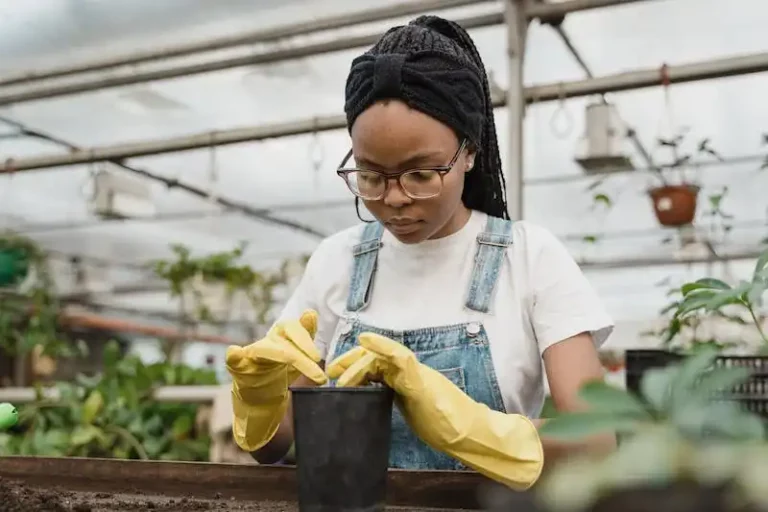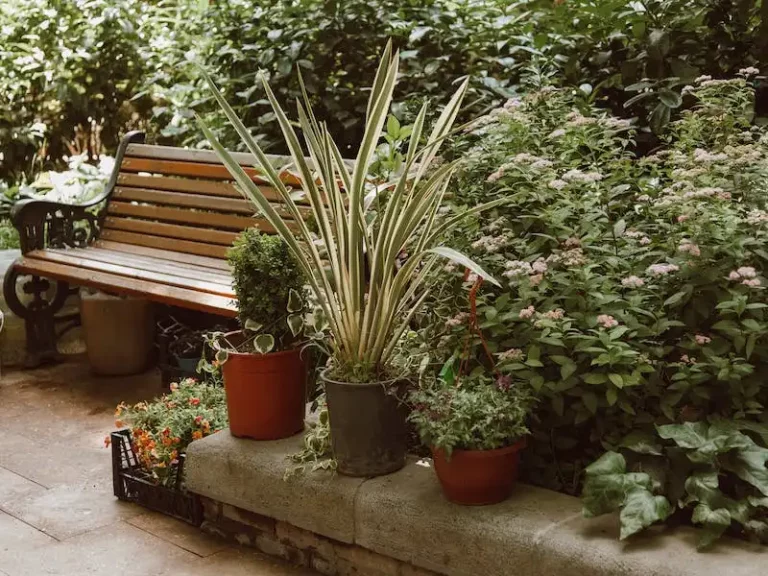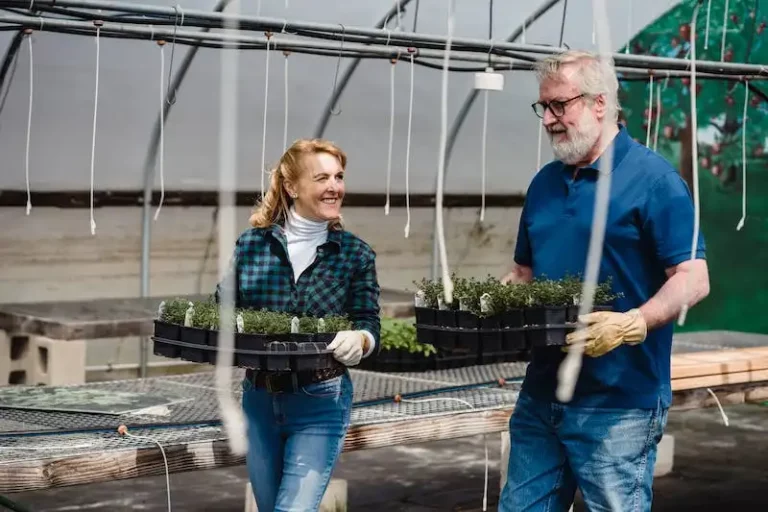When it comes to planting nasturtiums, water and sun are two key factors that play a crucial role in the success of these lovely plants. Nasturtiums are easy-to-grow flowering plants which add a pop of vibrant color to any garden. These hardy plants come in a variety of shapes, sizes, and colors and can thrive in different locations.
Gardeners in frost-free regions can enjoy planting nasturtiums in a well-drained area where they can receive full sun. These plants love warm temperatures and will do well in most parts of North America. However, in cooler regions, it is best to wait until mid-May or even early June, when the threat of frost has passed, before planting nasturtiums outdoors. In cases where the temperatures drop below freezing, it is advisable to start the seedlings indoors and transplant them outside when it warms up.
Planting nasturtiums is fairly simple. These plants prefer peat-free soils and can be sown directly into the ground. The seeds should be sown about half an inch deep, and spaced around eight to twelve inches apart. Once planted, nasturtiums require minimal care. Regular watering is important, keeping the soil moist but not waterlogged. These plants are quick growers, and within a few weeks, you’ll see them sprouting.
One great thing about nasturtiums is that they make excellent companion plants in the garden. They have a natural deterrent effect on certain pests, including aphids and several cabbage worms. They also attract beneficial insects like soldier beetles, which help control harmful garden pests. Additionally, nasturtiums can be used as a trap crop for moths that typically attack vegetables. By planting nasturtiums near your vegetable garden, you can protect your crops from damage.
When it comes to fertilizing nasturtiums, less is better. These plants are known as “light feeders,” and excessive fertilization can result in lush green foliage but limited blossom production. However, if your plants appear pale and less vigorous, a well-balanced fertilizer can be used sparingly to give them a boost.
Once your nasturtiums start growing, they may need some support. Depending on the variety, some nasturtiums have a climbing habit and will require a trellis or stake to help them grow upright. Bushy varieties can benefit from occasional pruning to maintain a neat appearance. It’s also a good idea to remove any yellow or diseased leaves to keep the plants healthy.
In conclusion, planting nasturtiums is a wonderful way to add a peppy touch to your garden. These easy-to-grow plants offer beautiful blossoms and a variety of benefits, from companion planting to attracting beneficial insects. With just a little bit of care and attention, you can enjoy the beauty and benefits of nasturtiums throughout the growing season.
Nasturtiums
Nasturtiums are quick-growing annuals that are known for their vibrant flowers, edible leaves, and peppery taste. They thrive in full sunlight and can tolerate a wide range of soil conditions, although they prefer slightly acidic soil.
When planting nasturtiums, choose a location that receives at least 6-8 hours of sunlight per day. They can be grown in containers on a balcony or directly in the ground, depending on the available space. Nasturtiums are frost-tender plants, so they should be planted after the last frost date in your area.
Before sowing the seeds, prepare the soil by loosening it to a depth of about 6 inches. Nasturtium seeds can be sown directly into the soil, as they do not transplant well. Plant the seeds 1 inch deep and 8-12 inches apart, depending on the variety. Water the seeds well and keep the soil moist until the seedlings emerge.
Once the nasturtiums start growing, they require minimal care. They are drought-tolerant plants and only need regular watering during dry periods. Avoid overwatering, as this can cause the plants to wilt. Nasturtiums also don’t require fertilization, as excessive nutrients can lead to more foliage growth and less flowering.
To keep nasturtiums healthy, regularly check for any signs of pests or diseases. Aphids and caterpillars are common pests that may attack the plants. Use a mild soap solution to control them if necessary. Nasturtiums are also known to attract cabbage moths, which are a common pest in vegetable gardens. Planting nasturtiums near your vegetables can help deter these pests.
Nasturtiums are known for their vining growth habit. If the plants start to outgrow their space, you can prune them back to encourage bushier growth. Pruning also helps to prevent diseases and keeps the plants looking neat and tidy.
Nasturtiums have a self-seeding habit, meaning they will drop their seeds and come back year after year. If you want to limit their spread, you can deadhead the flowers before they go to seed. The seeds can also be harvested for later use or stored for the next growing season. Nasturtium seeds are small and perfectly round, resembling peppercorns.
In addition to their ornamental value, nasturtiums are also valued for their edible leaves and flowers. The leaves and flowers can be used in salads, soups, and other culinary dishes. They have a peppery flavor, similar to watercress. Nasturtiums are high in vitamin C and have antioxidant properties.
In summary, nasturtiums are easy to grow annuals that add beauty and value to any garden. They prefer full sunlight and slightly acidic soil. With proper care and attention, they will reward you with vibrant flowers and edible leaves throughout the growing season.
About Nasturtiums
Nasturtiums are peppy and vibrant flowering plants that are a great addition to any garden or balcony. They are known for their beautiful round leaves and colorful flowers that come in shades of orange, yellow, and red. The most common variety of nasturtium is called Tropaeolum majus.
These plants are easy to grow and require limited care. They prefer well-drained and warm soil, and they thrive in areas with high sunlight. Nasturtiums are suitable for both gardens and pots, making them versatile for any space.
The planting season for nasturtiums is usually mid-May, when the temperature is warm enough for the seeds to sprout. They can be sown directly into the soil or started indoors and transplanted later. If starting indoors, it is recommended to sow the seeds in potting soil and provide them with bright, indirect sunlight. Once the sprouts have grown, they can be transplanted into the garden or a larger pot.
Nasturtiums are great companion plants for vegetables, as they attract beneficial insects that help control pests. They also act as a natural deterrent against certain pests, such as aphids and whiteflies. In addition to their pest-repelling properties, nasturtiums are edible and can be used as a garnish or added to salads for a peppery flavor. The leaves, flowers, and seed pods are all edible.
These plants self-seed easily, meaning they will come back year after year without needing much attention. Their long vines can be trained to climb a trellis or wall, adding vertical interest to your garden. If you prefer to limit their spread, you can clip off the seedpods before they have a chance to drop their seeds.
| Nasturtium Care Tips | |
|---|---|
| Watering: | Nasturtiums prefer regular watering, but be careful not to overwater as it can lead to root rot. |
| Fertilizing: | These plants do not require much fertilizing, as they can thrive in poor soil. However, if you want to encourage more flowering, a balanced fertilizer can be applied once a month. |
| Pests and Diseases: | Nasturtiums are generally resistant to pests and diseases. However, they can sometimes attract aphids, caterpillars, and whiteflies. Regularly inspect the plants and spray with a mild soap solution if pests are present. |
| Temperature: | Nasturtiums prefer warm temperatures and can tolerate heat well. They may wilt if exposed to extremely hot conditions, but they will recover once the temperature cools down. |
| Humidity: | These plants prefer moderate humidity levels and can tolerate slightly acidic soil. |
Whether you are a novice gardener or an experienced forager, nasturtiums are a great addition to your garden. They provide beautiful flowers, companion support for vegetables, and a tasty addition to your meals. So why not plant some nasturtiums this season and enjoy their vibrant colors and unique flavors?
Planting nasturtiums sowing location plant care
Nasturtiums, also called Tropaeolum, are peppy flowers that can add a vibrant touch to any garden. Native to South America, these hardy plants are known for their round, deep green foliage and colorful blooms. Whether you’re a novice or experienced grower, nasturtiums are relatively easy to care for and can thrive in a variety of conditions.
When planting nasturtiums, the key is to choose a well-draining soil that contains organic matter. They can be planted directly in the ground or in a potting mix if you prefer container gardening. Nasturtiums prefer a sunny location with at least six hours of direct sunlight per day. However, they can tolerate partial shade, especially in warmer regions where full sun all day may lead to their foliage wilting.
Watering is essential for the health of your nasturtiums. They prefer to be kept consistently moist, but not waterlogged. Water them regularly, especially during dry spells, and avoid overhead watering to prevent the foliage from getting wet, as this can lead to diseases. Mulching around the plants can help retain moisture and suppress weeds.
Nasturtiums are quick growers and can become bushy vines, depending on the variety. If you prefer a more compact plant, you can pinch the stems to encourage branching. This can also help prevent the plant from self-seeding too much. However, if you want your nasturtiums to self-seed for next year, it’s best to let them go to seed at the end of the season.
Fertilizing your nasturtiums is not always necessary, as they can do well in poor soil. However, if you want to give them a boost, you can use a balanced, water-soluble fertilizer once every two weeks during the growing season. Be careful not to over-fertilize, as this can result in more foliage growth and fewer blooms.
Nasturtiums are generally low-maintenance plants, but they can occasionally face some issues. If you notice aphids or caterpillars on your plants, you can spray them with a gentle insecticidal soap or use natural insect predators like ladybirds and lacewings. Powdery mildew can also be a problem, especially in humid climates, so make sure to provide good air circulation around your plants.
Harvesting nasturtiums is a fun and rewarding task. The flowers, leaves, and immature seeds are all edible and have a peppery, slightly spicy flavor. You can use the flowers to decorate salads, add them to sandwiches, or infuse them in vinegar. The leaves can be used in salads or as a garnish, and the immature seeds, also known as “nasturtium capers,” can be pickled and used as a tangy condiment.
In conclusion, nasturtiums are versatile and beautiful plants that can thrive in a variety of conditions. Whether you plant them in your garden or in pots, they will surely brighten up your space with their vibrant colors and lush foliage. With proper care and attention, you can enjoy their beauty all season round.



